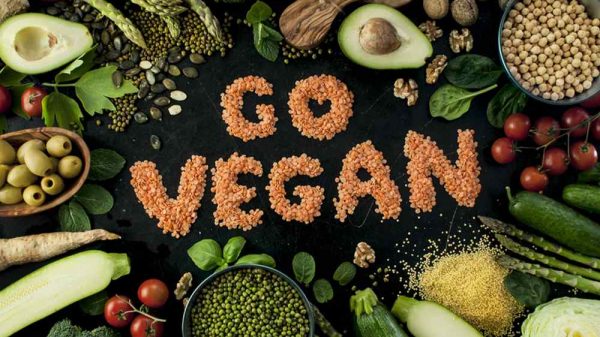Nutrition has long been a hot topic in popular culture. Gentle nutrition is an anti-diet culture principle that helps guide health and wellness for both the body and mind. What exactly is gentle nutrition and how can you apply it to your life? Read on to find out more about gentle nutrition and how you can incorporate it into your daily routine.
What Exactly Is Gentle Nutrition?
Gentle nutrition is a principle of intuitive eating, which is a non-diet approach to eating that encourages listening to your body’s cues surrounding food. Intuitive eating was made popular by registered dietitians (RDN) Evelyn Tribole and Elyse Resch, who are also certified eating disorders registered dietitians (CEDRD) If you are on an intuitive eating journey, practicing gentle nutrition is an integral part of this journey.
Adopting intuitive eating patterns means breaking down the rigid rules associated with conventional diets and diet cultures and encourages a healthier, more balanced relationship with food. In general, intuitive eating means listening to your body, feeling when you’re hungry and full, and refraining from moralizing food. Gentle nutrition is the last principle of intuitive eating and emphasizes making food choices that support your mental health while nourishing your body.
Let’s go through strategies for implementing gentle nutrition into your daily routine.
Gentle Nutrition Tips and Strategies
Are you wondering how to incorporate dental nutrition strategies into your daily life? Here are a few tips and strategies that you can refer to.
1. Eat Food That Tastes Good
When it comes to gentle nutrition, eating should be a positive experience. So, it’s important that you actually enjoy the foods that you’re eating. Nourishing your body doesn’t mean you need to eat bland, tasteless, boring food. Celebrate the flavors you like and incorporate them into your meals.
2. Stay in Tune with Your Body
Start incorporating more observations and reflection into your meals. For example, make a habit of noting how your body feels after certain foods. The point of gentle nutrition is making choices that nourish your body and make you feel your best. For example, you may love chowing down on a cheeseburger and fries on occasion. At the same time, you may also notice that in the hours after consuming this meal, you feel a little bit more sluggish and tired than usual. Allow these observations to shape your food choices going forward.
On the other hand, maybe you enjoy a big breakfast burrito filled with eggs, veggies, and cheese, and you notice that it really powers up your morning and makes you feel energized for the day. Maybe this means that you incorporate more breakfast burritos into your breakfast routines.
Overall, gentle nutrition is really about making sure that you’re making food choices that support your health and your well-being. A big part of this is noticing your energy levels, your mood, and your general state of well-being when it comes to certain foods.
3. No Foods Are Forbidden
In contrast to diet culture marketing and messaging, an important part of gentle nutrition is the idea that no foods are forbidden. It’s important to realize that restricting whole food groups and certain foods will increase the chances of bingeing and forming an unhealthy relationship with food.
4. Balancing Macronutrients
Balancing macronutrients is a helpful practice when following gentle nutrition eating patterns. The three key macronutrients that the body needs to support all biological processes are proteins, carbohydrates, and fats. Proteins offer essential amino acids that the body needs to support the synthesis of muscle tissue, enzymes, and hormones. Carbohydrates provide the body with usable energy to power all cellular processes. Fat supports brain health, cellular structure, and mechanisms that maintain homeostasis.
Getting all three macronutrients into meals and snacks helps stave off hunger cravings and increase satiety after a meal. Carbohydrates provide a boost of energy, while fat and protein are more slowly digested for a steady stream of energy over time. Because fat and protein are digested more slowly, they help us feel satiated for longer.
Eating a combination of all macronutrients helps us avoid overeating, and incorporating all three macronutrients into meals and snacks helps stave off hunger cravings.
5. Variety
Including a variety of different foods in your diet is part of healthy eating habits, and it’s also fun! Consuming a variety of fruits, veggies, whole grains, nuts, seeds, dairy, and meat, is that you’re not only getting a wide variety of crucial macronutrients and micronutrients but also experiencing a spectrum of flavors.
When you’re grocery shopping, for example, don’t be afraid to try out the new fruit that’s on the shelves that hasn’t been there in previous weeks. Or, maybe there is a strange-looking vegetable that you’ve never tried before. Or, maybe there’s a new interesting frozen meal that looks tasty. Whatever the case, aim to include more variety in your diet to keep food both interesting and nourishing.
Eating a vast variety of foods introduces a balance of micronutrients and macronutrients into your daily diet. Plus you learn about new flavors and find out about what kind of food you enjoy most and that makes you feel your best, and foods that you don’t like as much and potentially don’t make you feel your best.
6. Moderation
Moderation is one of the keys to incorporating gentle nutrition into your daily eating habits. Gentle nutrition encourages enjoying all foods in moderation. Moderation is one of the keys to incorporating gentle nutrition into your daily eating habits. Gentle nutrition encourages enjoying all foods in moderation. For example, many diet plans might discourage the consumption of any food such as cookies, chips, cakes, and pastries. In contrast, gentle nutrition eating practices encourage you to enjoy these foods when you feel like eating them and in moderation.
7. Focus on Overall Trends
When aiming to follow intuitive eating patterns and gentle nutrition, keep in mind that the overall trend is the most important thing. Eating one unhealthy thing isn’t going to sabotage your health. For example, eating one cheeseburger, one serving of french fries, or enjoying one dessert isn’t going to immediately drive up your cholesterol levels and induce fatty liver disease. Rather, it’s the overall trend over time that impacts your health.
The “all or nothing” mentality is very common among dieters, because of the very restrictive nature of many diets and damaging rhetoric that emphasizes perfect eating choices and demonizes sugar and fat, even in small quantities. However, this diet mentality often sabotages a healthy relationship with food and actually misses the whole point of health and well-being. Eating healthy should be tasty, enjoyable, and nourishing for the body. Eating healthfully is not a punishment; it should not be restrictive.
Enjoying foods like sweets and restaurant foods on occasion is an important part of mental health.
8. 80/20
If you’re looking for a bit of guidance, the 80/20 idea is a great rule of thumb. This means that you eat 80% nourishing food that makes you feel good physically, and 20% less nutrient-dense foods that satisfy your cravings and support your mental well-being.
9. Eating Things That Need to Be Chewed
You can make a giant smoothie that offers plenty of calories to substitute a meal. However, we tend not to feel satisfied after a smoothie, because we usually consume it pretty quickly. Enjoying our food over a longer period of time and chewing our food can often feel more satisfying, psychologically. Eating foods that need to be chewed can make it easier to listen to your body‘s internal cues as you make food choices. Because we eat solid foods more slowly, or more likely to pick up on our bodies cues telling us that we feel full or that we feel hungry.
What Does a Day of Gentle Nutrition Look Like?
Of course, implementing gentle nutrition into daily life will look different for everyone. However, here is a journal entry that reveals what a day of practicing gentle nutrition looks like.
Breakfast
This morning, I woke up around 6:30 am and wasn’t feeling hungry immediately. So, I drank my morning coffee with a bit of cream and sugar while reading through my favorite news forums. Around 7 am, hunger kicked in and I made myself a plate of scrambled eggs with kale, diced red peppers, and onions. I absolutely love spicy food, so I topped off my eggs with a drizzle of Sriracha. I enjoyed my eggs with a side of whole-grain toast, mashed avocado, and grapes.
Lunch
Today was a busy day at work, and I also didn’t have time to pack my lunch. So I quickly grabbed lunch with colleagues at a local cafe around 11 am. The cafe didn’t have too many options, but the lasagna with cheese and meat sauce sounded good to me since I love Italian food. I opted for a large cup of water with it. The lasagna was delicious, but the portion was huge and I felt full after eating a little more than half of it. So I got a to-go box and put it in the fridge in our office so I could bring it home later.
Snack
My afternoon at work was filled with meetings, so I didn’t have too much time to snack. I quickly grabbed a protein bar that I keep in my bag to tie me over until dinner time.
Dinner
Because I had a fairly heavy lunch, I wasn’t in the mood for a huge dinner. I opted for a green salad topped with quinoa and some leftover chicken from last night’s dinner. I also took a few bites of the lasagna from lunch.
Dessert
I’m almost always craving something sweet in the evening. Tonight I had a few dates paired with walnuts, and a cup of chai tea sweetened with honey. I enjoyed my dessert while watching an episode of Friends.
Observations
The eating patterns from this person’s day wouldn’t fit on every conventional “diet.” And that’s the way it should be! This person made choices that were tasty and convenient, while also taking into account how they felt physically and mentally.
Benefits of Gentle Nutrition
Gentle nutrition fosters a better relationship with food and with your body. Adopting a gentle nutrition mentality connects your body to food and underscores the importance of mental health when it comes to food and nutrition choices. Gentle nutrition and intuitive eating are particularly helpful for individuals struggling with any kind of disordered eating or clinical eating disorders.
Cons of Gentle Nutrition
There are some cases in which gentle nutrition may not work as well. This is especially true for individuals who may have certain health conditions, like type 2 diabetes. Moreover, individuals with digestive disorders or other inflammatory disorders may need to follow a more restrictive diet, in order to support their physical health.
Things to Keep in Mind
Like any philosophy of eating, gentle nutrition won’t necessarily work for everyone. If you’re looking for the best eating philosophy and eating habits that fit your specific needs and health conditions, it’s a good idea to talk to your doctor or a registered dietitian. These professionals can help guide you in forming an eating plan that is tailored to your specific needs.
Conclusion
Gentle nutrition is a type of mindset when it comes to eating that emphasizes the importance of both mental health and physical health. Adopting gentle nutrition philosophies means eating everything in moderation and choosing foods that make you feel your best both physically and mentally. Gentle nutrition and intuitive eating are foils to popularized diet culture trends. Gentle nutrition and intuitive eating are often extremely effective for supporting health and well-being, especially for individuals who are suffering from disordered eating patterns.























